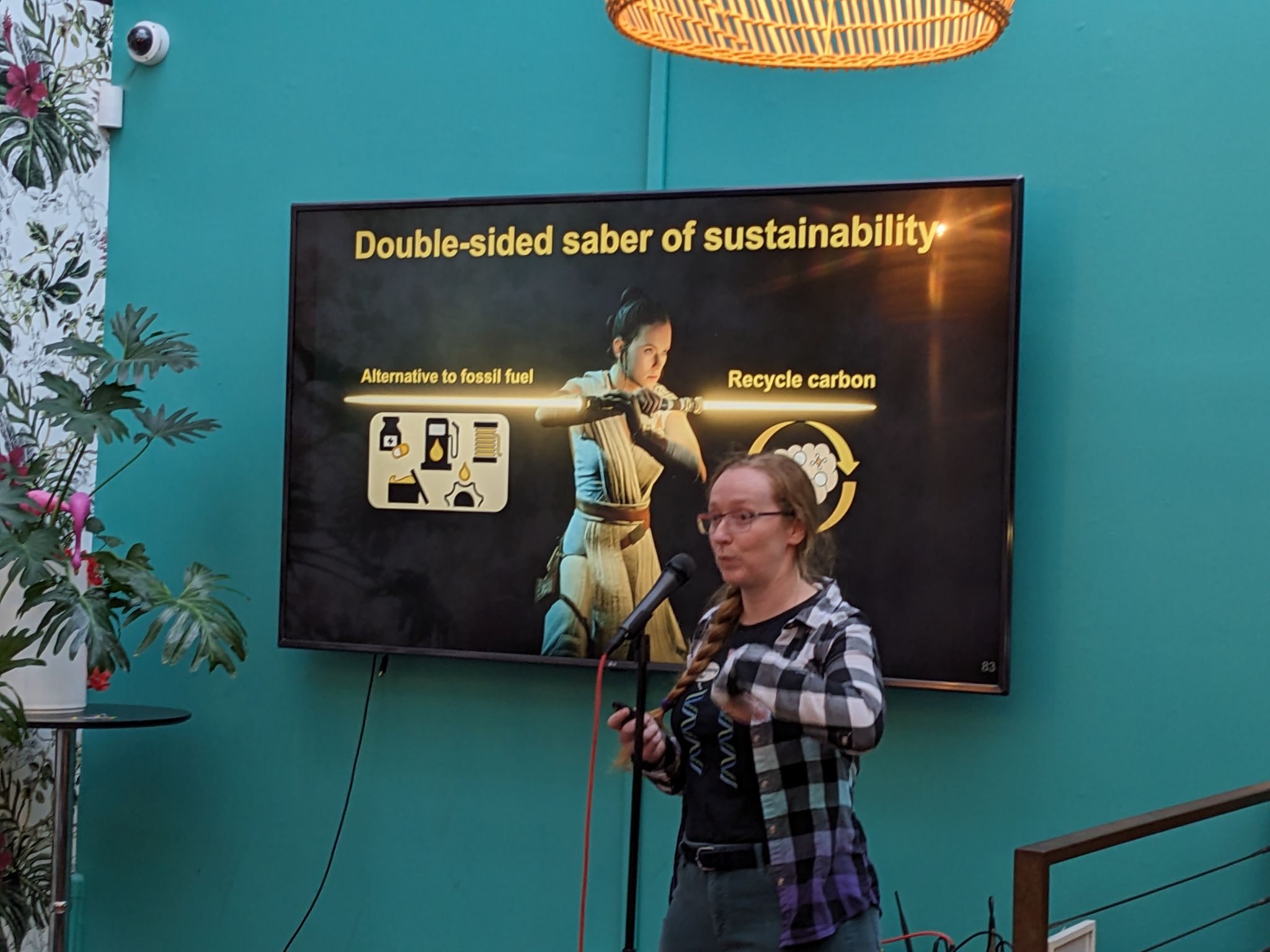Event Format - Lightning Talks

What is this page?
This is an event guide for organizing Climate Lightning Talks.
Explore other event guides here.
Connect with Jacob Caggiano if you need help
What are lightning talks?
They are your own version of Ignite Talks where the tagline is:
"Enlighten us, but make it quick!"
The official "Ignite" format is 5 minutes, 20 slides, with 15 seconds between each slide.
We recommend making it a little easier for your guest speakers by allowing any amount of slides and timing between slides.
Five minutes is a good limit though.
Steal our Assets
From the Seattle Climate Lightning Talks
Go to File > Make a Copy
Primary goal - enlightenment and inspiration
-
Promote local thought leaders
-
Get people thinking in new ways
-
Break the ice with new ideas
There are 5 steps
-
Pick a Venue
-
Organize presenters
-
Promote the event
-
Put on a great show
-
Share the Results
STEP ONE: Pick a Venue
The details are more important than other event formats, because Lightning Talks require both a visual display for slides and audio amplification to hear your presenting speakers.
We'll cover this below after you've also considered
-
Size (not to small)
-
Location (easy to get to)
-
Amenities (food and drinks on site, seating, not too noisy)
As your list of venues grow, Share It for future reference with other organizers.
Special Considerations
-
Audio amplification
-
Visual display for slides (large video monitor(s) or projection screen)
-
Seating for the audience
If the venue requires a minimum fee, you may want to charge for tickets and/or find a sponsor.
How to find a sponsor
-
Make a list of climate tech companies in your area. Go to climatetechlist.com or climatebase.org and filter by location.
-
Find connections on LinkedIn, ask for intros to get in the door. You can try messaging someone who works there on the Work on Climate Slack Community.
-
Make your pitch in the company's interest by giving thanking them and allowing them to announce something before the panel starts. If a venue requires a reservation fee, you may have luck requesting a waiver in support of the climate change community.
It's great to have a reliable sponsor for future events.
If you nurture the relationship, other community organizers who need sponsors can benefit.
This is a fantastic way to grow your local ecosystem
STEP TWO: Organize presenters
This involves:
-
Putting out a Call for Speakers
-
Scoring your speakers based on a set of criteria
-
Communicating the results to those selected and not selected
-
Coaching your speakers and sharing logistics
Putting out a Call for Speakers
The easiest way to do this is to create a short form (like a Google Form).
The form will have a short intro on the event, explain what you're looking for in a speaker, and a few questions about the speaker's pitch and background.
Scoring Speakers
First - you'll need to have a set of scoring criteria to rank your proposals.
For example:
-
Important themes and categories
-
Diversity of ideas
-
Diversity of backgrounds
You also want to consider the speaking order and the "flow" of the event to set the right mood throughout.
For example:
-
A playful opener
-
A hot button issue before intermission
-
A funny quirky topic
-
A closer that's inspiring and memorable
When you have that established, you can score your proposals on a spreadsheet.
Communicating back
Coaching your speakers and sharing logistics
-
Tech rehearsal
-
Dry run
STEP THREE: Promote the event
Use a tool such as Luma to craft a sharable event. Ensure the climate theme and any other goals or activities are clear.
Utilize various marketing channels such as social media platforms, email newsletters, and your personal network to spread the word. Encourage others to share the event.
In Seattle - we use the Work on Climate Slack and post in the #meet-seattle channel
STEP FOUR: Put on a great show
-
Beforehand, gather any required materials. Common materials are markers and name tags.
-
Arrive early on the event day to set up, address any last-minute concerns, and be ready to welcome attendees with organization and enthusiasm.
Take tons of photos:
-
All speakers individually on stage
-
Your audience enjoying themselves
-
A group photo with presenters and organizers together
STEP FIVE: Share the Results!
After the event, utilize social media to share the highlights with those who attended and those who missed out. Sharing the results not only celebrates the success of the event but also encourages future engagement and participation.